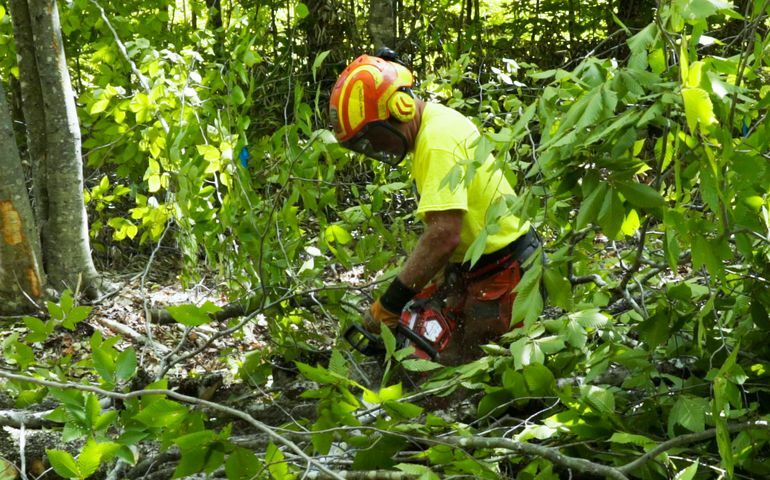UMaine launches initiative to advance Maine’s forest-based economy
 COURTESY / SUTHERLAND WESTON
A new University of Maine initiative seeks to advance Maine’s forest-based economy.
COURTESY / SUTHERLAND WESTON
A new University of Maine initiative seeks to advance Maine’s forest-based economy.
The University of Maine this week launched the Forest Economy, Sustainability and Technology, or FOREST, initiative to advance Maine’s forest-based economy.
The multidisciplinary initiative brings together academic, industry, government and community collaborators to create research, education and outreach solutions that enhance the economic and ecological sustainability of forest-based communities, according to a news release.
The collaborators include representatives from more than two dozen departments, colleges and organized research units within UMaine, who are coordinating with local, state, federal and international partners.
For more information, click here.
Workforce needs
FOREST is part of a series of recently launched University of Maine System initiatives that are linked to the system’s research and development plan, with an eye toward addressing the workforce and social and economic needs, Kody Varahramyan, vice president for research and dean of the graduate school, said in the release.
Maine’s forest resource measures over 17 million acres and covers nearly 90% of the state, and forms the largest contiguous block of undeveloped forestland east of the Mississippi.
Largely privately owned and naturally regenerated, the woods are considered an economic keystone for many rural communities. Maine is the most-forested state in the country.
Optimizing the increasingly complex relationships among resource management, harvesting practices, utilization, forest health, wildlife habitat and rural economic prosperity is a concept known as the “forest bioeconomy.” It bridges forest-based businesses and policies with thinking on sustainability, product applications and resource utilization.
Several recent activities within the state have focused on various facets of the forest bioeconomy. They include:
• Forest Opportunity Roadmap/Maine, or FOR/Maine, a cross-sector collaboration founded in 2017 between industry, communities, government, education, nonprofits and UMaine to ensure the state adapts and capitalizes on changing markets to maintain a leading role in the global forest economy and support prosperity in the state.
• Maine Climate Council, founded in 2019 to develop a statewide plan to reduce emissions by 45% by 2030 and at least 80% by 2050.
• The state of Maine's 10-year strategic economic development plan, created in 2019 to foster collaboration among the public, private, nonprofit and education sectors to grow and diversify Maine’s economy.
• Maine Jobs & Recovery Plan, outlining the state’s COVID-19 recovery strategy to make investments in solving Maine’s long-term challenges, to develop strategies for new opportunities, and to strengthen Maine’s future.
• “2019 Statewide Economic Contribution of Maine’s Forest Products Sector,” an analysis of the economic impact and trends in Maine’s forest economy developed by the UMaine Margaret Chase Smith Policy Center.
FOREST platform
To support the interconnected activities, FOREST will serve as a platform for available resources across UMS to advance the following goals:
• Conduct research among all disciplines and fields that touch the forests, land they occupy, and people and technology they support;
• Prepare tomorrow’s workforce across all aspects of the forests;
• Deliver services to all who rely on forests and land;
• Engage stakeholders to increase opportunities for scientists, businesses, communities and individuals to have an impact;
• Communicate outcomes and opportunities across technical and non-technical audiences to increase overall awareness and understanding of forest-related topics.
Maine's forest industry is going to have to replace as many as 850 jobs in the next few years and find workers for emerging sectors if the industry is going to grow by $4 billion, according to a study of workforce needs released earlier this year.













0 Comments